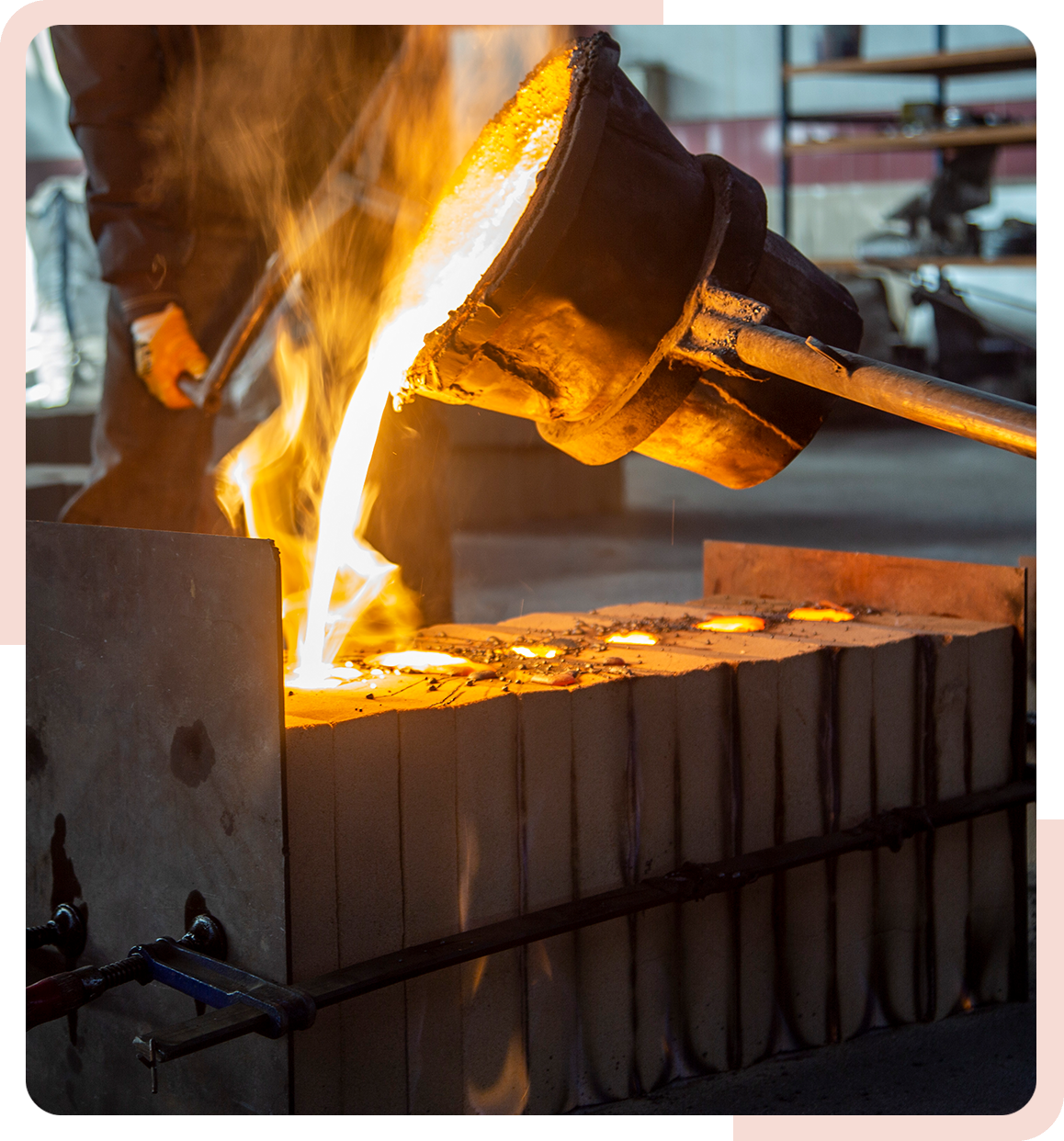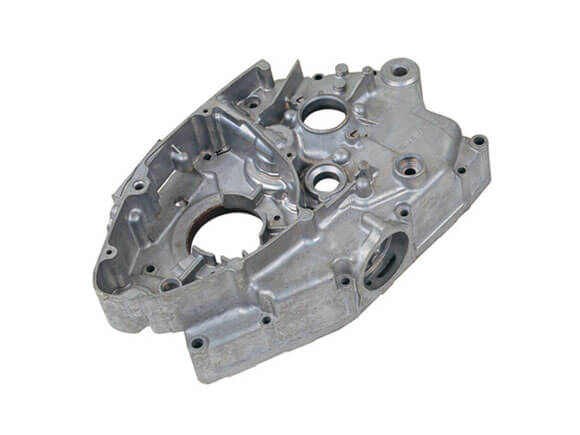Recognizing the Environmental Advantages of Aluminum Shop Techniques
Light weight aluminum factory strategies play a necessary function ahead of time sustainability within the manufacturing industry. By carrying out innovative reusing methods and energy-efficient techniques, these techniques substantially decrease waste and carbon impacts. Ingenious spreading techniques further enhance source conservation efforts. As industries progressively prioritize environmental duty, comprehending the complete impact of these techniques becomes crucial. What details innovations are leading the method in this makeover?
The Duty of Aluminum in Lasting Manufacturing
Although many materials add to sustainable production, aluminum attracts attention because of its distinct residential properties and recyclability. This lightweight steel is not only durable yet additionally has outstanding corrosion resistance, making it an ideal selection for different applications, from auto to building and construction. Its high strength-to-weight ratio results in energy financial savings during transport and usage. Furthermore, light weight aluminum can be reused indefinitely without shedding its intrinsic top qualities, advertising a round economic situation.
The manufacturing process of light weight aluminum has actually evolved, including energy-efficient methods that reduce carbon impacts. By making use of renewable resource sources, manufacturers are increasingly decreasing the environmental effect connected with light weight aluminum manufacturing. In addition, making use of recycled light weight aluminum calls for considerably less power contrasted to extracting and refining main light weight aluminum, bring about reduced greenhouse gas emissions. As industries look for sustainable services, aluminum's convenience and green attributes placement it as an essential material in the quest of greener production practices.
Advanced Recycling Techniques in Aluminum Foundries
Advanced reusing methods in light weight aluminum shops are reinventing the method scrap aluminum is processed and recycled. Cutting-edge methods, such as closed-loop recycling systems, allow shops to recover aluminum from manufacturing waste and out-of-date products efficiently. These systems reduce material loss and improve the top quality of recycled aluminum, making it a practical option to primary light weight aluminum manufacturing.
Additionally, advanced sorting modern technologies, consisting of automated optical sorting and X-ray fluorescence, improve the separation of aluminum from various other materials, ensuring higher purity levels in recycled results. This accuracy decreases contamination, which can compromise the integrity of the last product.
In addition, the integration of innovative melting innovations, such as induction melting and energy-efficient heating systems, enhances the recycling process, decreasing power usage. Jointly, these innovations add to an extra sustainable light weight aluminum industry by lowering reliance on virgin products and lowering greenhouse gas exhausts connected with light weight aluminum production.
Power Efficiency Improvements in Shop Workflow
Energy performance enhancements in aluminum factory procedures can greatly enhance sustainability methods. Implementing waste warmth recuperation systems allows foundries to repurpose excess power, lowering overall power consumption. Additionally, advancements in process automation simplify operations, causing reduced waste and enhanced source use.
Waste Warmth Recuperation
Carrying out waste warm healing systems in aluminum factories greatly improves power effectiveness by capturing and reusing excess thermal power generated throughout production processes. These systems promote the conversion of lost warm right into useful energy, which can be used for various applications within the factory, such as preheating materials or powering equipment. By recuperating warm that would certainly otherwise be eliminated right into the setting, factories can substantially decrease their general energy consumption and greenhouse gas emissions. This strategy not only decreases functional prices however likewise advertises sustainable methods within the sector. Furthermore, the adoption of waste heat healing technologies lines up with governing standards focused on lowering ecological influence, making it a crucial component of contemporary light weight aluminum foundry operations.
Process Automation Perks
Automating processes in light weight aluminum foundries can significantly enhance energy efficiency by maximizing manufacturing operations and lowering waste. By applying innovative modern technologies such as robotics and machine learning, foundries can simplify procedures, decreasing unneeded energy intake. Automated systems assist in specific control over temperature level and product handling, guaranteeing that power is utilized just when needed. Furthermore, real-time surveillance enables instant adjustments, reducing the risk of energy loss. The integration of automation not only enhances productivity however also lowers functional expenses, making factories extra affordable. Because of this, these energy-efficient techniques add significantly to sustainability goals, lowering the ecological impact of aluminum manufacturing while fulfilling boosting market needs - Aluminum Foundry. Improved energy effectiveness via automation represents a vital step towards greener shop procedures
Reducing Waste Via Ingenious Casting Approaches
Ingenious casting methods play a crucial duty in minimizing waste in light weight aluminum factories. Techniques such as innovative molding and the usage of recyclable products considerably lessen production scrap. These practices not only improve efficiency however additionally contribute to a much more sustainable production procedure.
Advanced Molding Techniques
As sectors progressively prioritize sustainability, advanced molding techniques in aluminum factories become effective options for minimizing waste. These innovative methods, such as 3D printing and accuracy mold and mildew making, considerably boost the performance of the casting process. By utilizing computer-aided layout (CAD) and simulation innovations, manufacturers can enhance mold geometry, lessening material use while keeping product honesty. In addition, advanced methods this content make it possible for the manufacturing of complex forms that standard approaches can not accomplish, minimizing the requirement for added machining and therefore reducing scrap material. The adaptability of these strategies permits quick prototyping, additional lowering preparations and energy consumption. Overall, the application of advanced molding methods stands for an essential action towards environmentally responsible light weight aluminum manufacturing, lining up with international sustainability objectives.
Recyclable Product Application
Recyclable materials play a critical duty in reducing waste within light weight aluminum factories, transforming the casting landscape through their effective application. By including scrap light weight aluminum and other recyclable components right into the production process, shops can substantially reduce the demand for virgin products. This not only conserves all-natural resources yet also reduces power intake connected with mining and refining. Ingenious spreading techniques, such as die casting and sand casting, allow for seamless combination of these products, guaranteeing premium results. The use of recyclable materials fosters a circular economic situation, where sources are continuously recycled and repurposed, minimizing landfill payments. Eventually, the critical use recyclables improves sustainability while advertising cost-effectiveness in light weight aluminum my sources shop procedures.
Reducing Production Scrap

Life Process Assessment of Light Weight Aluminum Products
Although aluminum is widely identified for its sturdy and lightweight properties, a complete Life Cycle Analysis (LCA) exposes the environmental effects related to its production, use, and disposal. The LCA procedure analyzes the power intake, greenhouse gas discharges, and source exhaustion linked to light weight aluminum items from extraction of bauxite ore to end-of-life monitoring. Main aluminum manufacturing is energy-intensive, often relying upon nonrenewable fuel sources, which contributes substantially to carbon footprints. In contrast, recycling light weight aluminum offers significant ecological advantages, as it utilizes just a portion of the power needed for primary production. In addition, the reusing procedure reduces landfill waste and conserves all-natural sources. The LCA likewise considers the product's longevity and capacity for reuse, highlighting the relevance of sustainable style. On the whole, understanding the life process impacts of aluminum products is important for making informed choices that prioritize environmental sustainability within the sector.
Situation Researches: Effective Sustainable Practices in the Market
The light weight aluminum market has begun to embrace cutting-edge lasting methods that attend to the ecological challenges determined in Life process Evaluations. One significant case is a leading shop that executed a closed-loop recycling system, considerably lowering waste and power intake. By reusing scrap light weight aluminum in production, the center achieved a 40% decrease in its carbon impact.
One more instance entails a producer that embraced sustainable power resources, powering its procedures with solar and wind power - Precision aluminum casting. This change not just decreased greenhouse gas exhausts but additionally improved the firm's track record amongst environmentally conscious customers
Furthermore, a third factory has bought innovative spreading techniques, which enhance product usage and lessen problems, further reducing resource consumption. These study illustrate that the light weight aluminum industry is capable of incorporating lasting methods, demonstrating both environmental responsibility and financial viability, inevitably adding to a more sustainable future.
Often Asked Questions
Exactly How Does Light weight aluminum Compare to Various Other Steels in Sustainability?
Aluminum is typically thought about a lot more sustainable than numerous metals as a result of its recyclability, lower energy requirements for manufacturing, and reduced environmental impact. Its lifecycle efficiency exceeds that of steel and copper in various applications.
What Is the Carbon Impact of Light Weight Aluminum Shop Processes?
The carbon impact of aluminum foundry procedures differs, commonly varying from 4 to 15 metric lots of carbon dioxide per lot of aluminum created. Elements influencing this consist of energy resources, technology, and the efficiency of operations.
Are There Wellness Dangers Associated With Aluminum Foundry Procedures?

What Are the Prices Linked With Sustainable Light Weight Aluminum Techniques?
The expenses associated with lasting aluminum methods include greater initial financial investments in technology, potential rises in operational expenditures, and recurring maintenance. Nonetheless, these are often offset by long-term financial savings and decreased environmental impact.
Exactly How Does Aluminum Recycling Influence Resident Communities?
Aluminum reusing favorably effects regional neighborhoods by developing tasks, reducing landfill waste, and reducing power prices. It promotes financial development and advertises ecological stewardship, bring about healthier living conditions and enhanced community involvement in sustainability initiatives.
In addition, the use of recycled aluminum requires considerably much less energy compared to removing and refining primary light weight aluminum, leading to lower greenhouse gas emissions. Advanced reusing strategies in aluminum factories are changing the method scrap aluminum is refined and reused. Aluminum Foundry. Carrying out waste warmth recuperation systems in aluminum shops substantially improves power performance by catching and reusing excess thermal power produced during production procedures. Automating procedures in aluminum shops can greatly improve power performance by maximizing manufacturing process and lowering waste. The carbon footprint of aluminum factory procedures differs, typically ranging from 4 to 15 metric lots of CO2 per ton of light weight aluminum produced